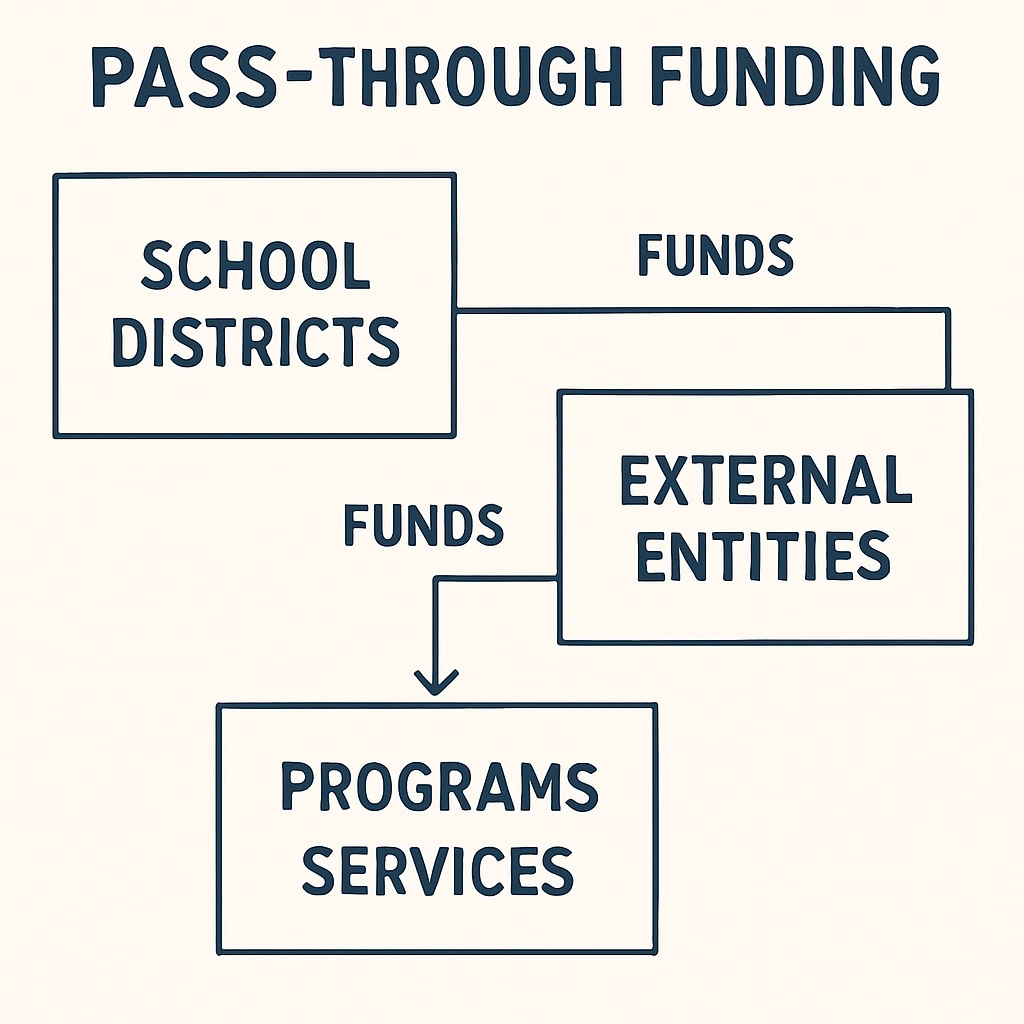The use of pass-through funding, per-student spending, and school budgets impacts the transparency of resource allocation in K-12 education. Pass-through funding mechanisms—where funds are temporarily transferred through a school district to another entity—can artificially inflate per-student spending statistics. While these practices might enhance the appearance of district-level investments, they often obscure the reality of how much money is genuinely allocated to student education. As a result, policymakers and stakeholders may struggle to identify and address inequities in resource distribution.
What Is Pass-Through Funding?
Pass-through funding refers to a financial arrangement in which money is allocated to a school district but is subsequently transferred to another entity, such as a charter school, special education program, or external service provider. While this funding is counted in the district’s budget, the funds are not directly utilized for the students within the district’s traditional schools. For example, suppose a school district receives $5 million in pass-through funds to support a charter school. This amount is included in the district’s budget but does not benefit students enrolled in the district’s schools.

How Pass-Through Funding Inflates Per-Student Spending
Per-student spending is a key metric used to assess the level of investment in education. However, when pass-through funding is included in a district’s spending data, it can significantly inflate the reported figures. For instance, a district with $20 million in total funding and 5,000 students may report a per-student spending figure of $4,000. If $5 million of this budget is pass-through funding that does not benefit the students directly, the actual spending per student would be closer to $3,000—a substantial difference.
This discrepancy creates an illusion of higher investment, potentially misleading stakeholders about the adequacy of resources allocated to student education. As a result, critical issues like classroom overcrowding or outdated educational materials may be overlooked.
The Impact on Educational Equity
The distortion caused by pass-through funding has profound implications for educational equity. Resource allocation disparities between districts are already a challenge, and inflated per-student spending figures can exacerbate these inequities. Schools with higher pass-through funding may appear better funded on paper, masking the struggles faced by under-resourced schools within the same district.
In addition, policymakers who rely on these metrics to make funding decisions may inadvertently perpetuate inequities. For example, a district reporting high per-student spending might not receive additional support, even if its actual investment in students is low due to pass-through arrangements.

Addressing the Problem: Policy Reforms and Transparency
To mitigate the issues caused by pass-through funding, several policy reforms can be implemented:
- Separate Reporting: District budgets should clearly distinguish between direct funding for student education and pass-through funding.
- Enhanced Transparency: Detailed financial disclosures can help stakeholders understand how funds are allocated and used.
- Data Adjustments: Policymakers should adjust per-student spending metrics to exclude pass-through funding, providing a more accurate picture of educational investment.
These measures can ensure that funding decisions are based on accurate data, promoting equity and addressing resource disparities.
Conclusion: Rethinking Per-Student Spending Metrics
The inclusion of pass-through funding in per-student spending metrics distorts the true picture of educational investment. By artificially inflating spending figures, these mechanisms mask inequities and hinder effective policymaking. Addressing this issue requires greater transparency, separate reporting, and adjusted metrics to reflect the reality of resource allocation. Ultimately, a more accurate understanding of school budgets can pave the way for equitable education policies that benefit all students.
Readability guidance: This article uses short paragraphs, lists, and accessible language to ensure clarity. Active voice is prioritized, and transitions such as “however,” “for example,” and “as a result” connect ideas smoothly. Each section emphasizes key points to promote understanding.


